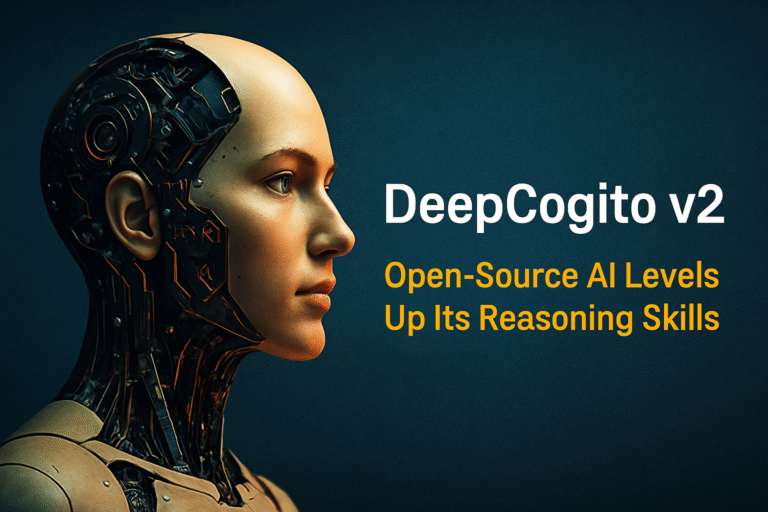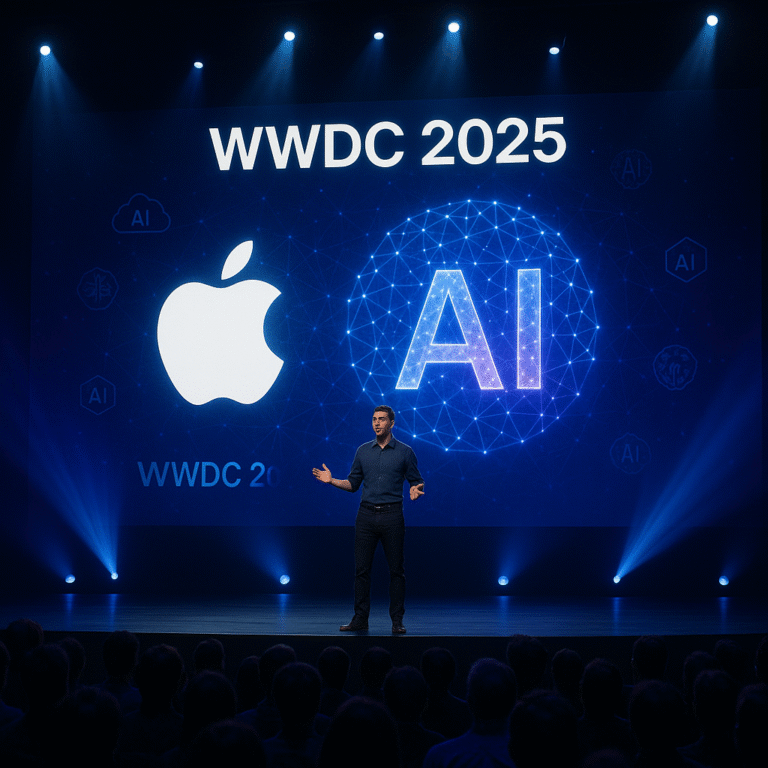
The artificial intelligence landscape is buzzing with innovation from players like OpenAI, Google, and Anthropic. Now, it just got significantly more crowded – and potentially more interesting. Tech giant Amazon has officially unveiled Nova Sonic. This sweeping new initiative signals its most ambitious public push yet into large-scale generative AI. Indeed, Nova Sonic appears more than just a single model. It’s a multi-faceted platform and suite of tools designed to leverage Amazon’s vast ecosystem. Consequently, it targets everything from e-commerce optimization and content creation to developer empowerment via AWS. Furthermore, it could potentially supercharge the ubiquitous voice assistant, Alexa.
This announcement marks a pivotal moment. While Amazon has long been an AI powerhouse through AWS cloud services and the machine learning powering its retail operations and Alexa, Nova Sonic represents a direct entry into the high-stakes game of foundational models and user-facing generative applications. So, what exactly is Amazon AI Nova Sonic? What are its core components and potential capabilities? Moreover, how might it reshape industries where Amazon holds sway? This article dives deep into the launch details, analyzing the technology, potential impact, and what this means for businesses, creators, developers, and consumers.
Setting the Stage: Amazon’s AI Journey So Far
Amazon is certainly no stranger to artificial intelligence. In fact, its journey spans decades:
- E-commerce Engine: First, sophisticated AI and machine learning algorithms have long powered Amazon’s recommendation engines and search results. They also drive demand forecasting, warehouse automation, and fraud detection.
- AWS AI Dominance: Additionally, Amazon Web Services (AWS) is a leading provider of cloud-based AI/ML services. It offers tools like SageMaker for building models, Lex for chatbots, Polly for text-to-speech, and Rekognition for image/video analysis. AWS also provides Bedrock, granting access to various foundational models from third parties and Amazon’s own Titan family.
- Alexa’s Voice: Finally, Alexa brought conversational AI into millions of homes. This demonstrated Amazon’s prowess in natural language understanding (NLU) and voice interface technology.
However, until Nova Sonic, Amazon lacked a flagship, publicly accessible, large generative model. It needed something comparable in perceived capability or public awareness to models like GPT-4 or Claude 3. Nova Sonic aims to change that narrative. It builds upon these existing strengths while charting a new course.
What is Amazon AI Nova Sonic? A Platform Approach
Based on initial announcements and documentation, Nova Sonic isn’t a monolithic product. Instead, it’s a platform built around a powerful new foundational AI model, tentatively named “Nova.” Specialized application layers and suites – the “Sonic” components – are tailored for specific domains.
1. The “Nova” Foundational Model
This is the core engine driving the platform. While detailed technical specifications are emerging, Amazon highlights several key aspects:
- Large-Scale Architecture: Amazon positions Nova as a state-of-the-art large language model (LLM). It was likely trained on a massive, diverse dataset encompassing text, code, and potentially multimodal data (like images or audio, though the initial focus seems text-heavy).
- Capabilities: Early demonstrations suggest strong capabilities. These include text generation, summarization, complex reasoning, and coding assistance across multiple languages. The model also shows sophisticated natural language understanding. Benchmarking claims (pending independent verification) position it competitively against other leading models.
- Efficiency and Scalability: Nova Sonic leverages Amazon’s vast AWS infrastructure, potentially using custom silicon like Trainium and Inferentia. Therefore, a key focus appears to be on training and inference efficiency. This aims to make large-model capabilities more accessible and cost-effective.
- Safety and Responsibility: Furthermore, Amazon emphasizes built-in safety measures and bias mitigation techniques. It also includes tools for responsible AI development, likely drawing from its AWS AI service experience.
2. “Sonic Commerce AI”: Supercharging the Marketplace
This suite directly leverages Amazon’s unparalleled e-commerce data and infrastructure. Consequently, it seems designed to empower sellers and enhance the buyer experience:
- AI-Powered Product Listings: It offers tools to automatically generate compelling product titles, descriptions, and bullet points from basic inputs or even images. These are optimized for search visibility and conversion.
- Enhanced Personalization: Moving beyond collaborative filtering, Nova Sonic could enable hyper-personalized recommendations. This relies on a deeper semantic understanding of user queries, reviews, and product attributes.
- Smarter Customer Service: It features advanced chatbots capable of handling complex customer inquiries. They can resolve issues and provide personalized support with greater nuance.
- Intelligent Ad Generation & Optimization: Sellers get tools to automatically create diverse ad creatives (text, potentially image concepts). They can also optimize campaign targeting and bidding strategies using real-time market data.
- Review Analysis & Sentiment Insights: The suite provides capabilities to analyze vast numbers of customer reviews. It can identify emerging trends, summarize sentiment, and offer actionable insights for sellers and product developers.
3. “Sonic Creative Suite”: Tools for Content Generation
Addressing the booming creator economy and demand for generative media tools, this component focuses on content:
- Advanced Text Generation: Beyond product descriptions, it provides tools for writing articles, marketing copy, scripts, and email campaigns. Other forms of written content are also possible.
- Potential Multimodal Capabilities (Future Focus?): While the initial emphasis might be text, integration with image generation seems a logical next step. This could be used for ad visuals or product concepts. Similarly, audio/voice generation (for accessibility, voiceovers via Polly integration) is plausible, perhaps leveraging partnerships or future Nova iterations.
- Integration with Amazon Services: Potential future integration exists with Kindle Direct Publishing (KDP) for author assistance. It might also link with Prime Video for script analysis or Audible for narration tools.
4. AWS Integration: Empowering Developers
A cornerstone of the strategy involves making the Nova model and Sonic capabilities available through AWS:
- API Access: This provides developers and businesses access to the Nova foundational model via APIs on AWS. It will likely integrate within Amazon Bedrock alongside other model choices.
- Managed Services: Amazon offers managed services built on Nova Sonic. These allow businesses to easily deploy features like advanced chatbots or personalized recommendation systems without managing underlying infrastructure.
- Fine-Tuning and Customization: Businesses can fine-tune the Nova model on their own proprietary data. This allows for specific tasks and industry applications, hosted securely within AWS.
5. Alexa Reimagined? The Future of Voice AI
While not explicitly detailed as a separate “Sonic” suite, the potential for the Nova model to significantly enhance Alexa is immense:
- More Natural Conversations: The goal is moving beyond command-and-response. Instead, expect more fluid, contextual, and multi-turn conversations.
- Complex Task Execution: This could enable Alexa to understand and execute more complex, multi-step requests requiring reasoning.
- Enhanced Proactivity: Nova could allow Alexa to offer more relevant suggestions based on a deeper understanding of user habits and context.
- Improved Integration: Expect better integration with third-party skills and smart home devices through enhanced NLU. This could mean smoother interaction with the growing range of AI home robots available now.
Amazon’s Unique Angle: What Differentiates Nova Sonic?
While entering a competitive field, Amazon brings distinct advantages and potentially a different focus:
- Unrivaled E-commerce Data: Firstly, the ability to train AI on its massive e-commerce dataset is a unique differentiator for Sonic Commerce AI.
- Scale and Infrastructure: Secondly, AWS provides unparalleled scale for training, hosting, and deploying large AI models globally, often cost-effectively.
- Practical Application Focus: Thirdly, Amazon frequently prioritizes practical, scalable applications solving real-world business problems. Thus, Nova Sonic seems heavily geared towards tangible use cases in e-commerce and content.
- Vast Existing Ecosystem: Finally, integration possibilities with AWS, Alexa, Prime, KDP, etc., create a powerful flywheel effect. This embeds AI deeper into services millions already use.
Potential Impact Across Industries
The launch of Amazon AI Nova Sonic could send ripples across multiple sectors:
Impact on E-commerce
- Empowered Sellers: Smaller sellers might gain access to sophisticated AI tools, potentially leveling the marketing playing field.
- Hyper-Personalized Shopping: Consequently, buyers may experience significantly more relevant product discovery and interactions.
- Increased Efficiency: Automation of listing creation and customer service could streamline operations for businesses.
- Competitive Pressure: Moreover, other e-commerce platforms (like Shopify, eBay) will face pressure to deploy comparable AI.
Impact on Content Creation & Marketing
- Accelerated Content Production: Tools to rapidly generate drafts for articles, ad copy, and emails could significantly speed up workflows.
- New Creative Possibilities: Additionally, AI assistance could help creators brainstorm ideas and explore new content formats.
- Shift in Skills: Demand may increase for professionals skilled in prompt engineering and AI content editing. This reflects broader shifts, much like how AI is changing education.
Impact on the Cloud AI Market (AWS)
- Strengthened AWS Offering: Adding a powerful, proprietary foundational model to Bedrock enhances AWS’s competitiveness against Google Cloud and Microsoft Azure.
- Attracting AI Workloads: Providing both the model and infrastructure creates a compelling proposition for businesses deploying generative AI.
- Driving Compute Demand: Naturally, large model training and inference will drive demand for AWS compute instances.
Impact on Consumers (via Alexa)
- Smarter Voice Assistant: If integrated effectively, Nova could make Alexa significantly more capable and conversational.
- More Seamless Smart Home: Improved understanding could lead to better control of connected devices.
Impact on the Broader AI Landscape
- Intensified Competition: Amazon’s full-fledged entry adds another heavyweight contender. This drives further innovation and potentially impacts pricing.
- Focus on Practical Deployment: Amazon’s emphasis on business applications might accelerate generative AI adoption for tangible ROI.
- Debate on Data Usage: Using its vast data pool for training will likely reignite debates around data privacy and ethics.
Challenges and Considerations for Nova Sonic
Despite the potential, Amazon certainly faces hurdles:
- Execution Matters: Delivering on the promise of a state-of-the-art model and effective ecosystem integration is a monumental task.
- Stiff Competition: Google, Microsoft/OpenAI, Anthropic, and others have significant leads in certain areas.
- Safety & Bias: Ensuring the Nova model is fair, unbiased, and safe across diverse applications remains a critical, ongoing challenge.
- Privacy Questions: Utilizing user data requires transparency and robust privacy safeguards to maintain trust.
- Viable Monetization: Balancing free features with premium API access and AWS services will be crucial for success.
Availability and Pricing
Amazon has indicated a phased rollout for Nova Sonic:
- Initial Access: This likely starts with select AWS customers via Amazon Bedrock for API access and early managed services.
- Beta Programs: Subsequently, beta access for Sonic Commerce AI tools for sellers and Sonic Creative Suite for creators may follow.
- Broader Availability: Wider integration into consumer products like Alexa might take longer, pending further refinement.
Pricing details are not yet fully confirmed. However, they will likely follow standard cloud AI patterns like pay-per-use APIs, tiered subscriptions, and potentially bundled offerings.
The Future is Generative: What’s Next for Amazon AI?
The launch of Amazon AI Nova Sonic is not an endpoint; rather, it’s a significant beginning. Future developments could include:
- Enhanced Multimodality: Expanding Nova’s capabilities to deeply understand and generate images, audio, and video.
- Industry-Specific Models: Offering fine-tuned versions of Nova for sectors like healthcare or finance via AWS.
- Autonomous Agents: Moving towards AI agents performing complex action sequences across applications.
- Deeper Personalization: Leveraging AI for even more granular understanding of individual preferences.

Conclusion: Amazon Places Its Bet on Foundational AI
With the unveiling of Nova Sonic, Amazon is making a clear statement. It intends to be a leader not just in deploying AI but also in defining the next generation of foundational models and their practical applications. By leveraging its unique strengths in e-commerce, cloud infrastructure, and voice assistance, Amazon AI Nova Sonic holds the potential to significantly impact how businesses operate, creators work, and consumers interact with technology.
The focus on tangible benefits for sellers, developers, and potentially consumers differentiates Nova Sonic. While challenges remain in execution, safety, and competition, Amazon’s scale cannot be underestimated. Therefore, the coming months will be crucial as Nova Sonic rolls out more broadly. This will reveal its true capabilities and how effectively Amazon integrates this powerful AI across its vast empire. Indeed, the generative AI race just gained a formidable new contender, and the implications will surely be felt far and wide.





